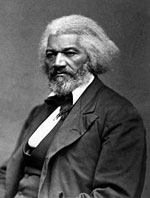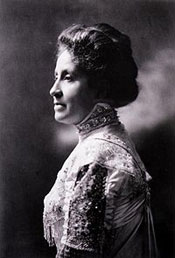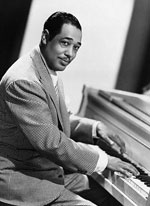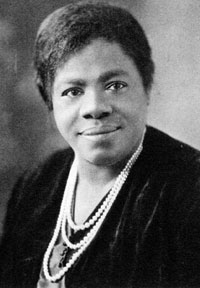 Every four years, we inaugurate our presidents in what Parliament Funkadelic called Chocolate City. But there’s never a focus on the people, places and events of the District of Columbia.
Every four years, we inaugurate our presidents in what Parliament Funkadelic called Chocolate City. But there’s never a focus on the people, places and events of the District of Columbia.
America’s first city with a black majority has contributed dramatically to
American history. Washington is full of extraordinary sites that
document the rise of African American influence in the city — and the
nation’s – history. With the inauguration of our first African American
president, the White House is no longer segregated. History needs to
shed its whites-only bias, too.
Federal City, as Washington was known, was established in 1800. The population included 10,066 whites; 3,244 slaves; and 793 free Negroes. Few people are aware that until 1850, when Congress shut down the slave trade, but kept slavery legal, Washington was a major hub for the slave trade. It’s where the largest slave auction in the nation operated, and slave pens, jails and auction blocks were common sights near the White House.

As slavery flourished, the African American scientist Benjamin Banneker was appointed by President George Washington to work with the Federal City architect and other officials to survey and help design the capitol. A school in the District of Columbia is named after him, and there is a park and museum dedicated to the scientist just outside Washington in Baltimore.

Cedar Hill, the home of abolitionist Frederick Douglass, was an adviser to President Lincoln and an ambassador to Haiti and the Domenican Republic, is a national historic site, maintained by the National Parks Service. Located in the Anacostia neighborhood in Southeast Washington, Douglass lived there from 1878
until he died in 1895.

The extraordinary educator, author and leader Mary Church Terrell was born into wealth in Washington in 1863. She was one of the first American women to earn a college degree, a founder of the NAACP, and was an appointee to the District of Columbia Board of Education — the nation’s first black woman to hold such a position. The home purchased by her and her husband spurred the integration of LeDroit Park and is a National Historic Landmark.

The great American composer, Duke Ellington, was born in 1889 in what’s known as the Shaw neighborhood around U Street, one of the most famous black cultural and social areas in Washington. A mural of the Duke is around the corner from where he was born. Though Ellington moved to Harlem in 1923, he regularly returned to Washington, often staying at the Whitelaw Hotel — once segregated — and playing historic venues like the Howard Theater and the Lincoln Colonnade.
By 1900, Washington had the largest percentage of African Americans of any city in the nation. Racial tensions boiled over in 1919, when white mobs rampaged against blacks. (Such outbreaks were so common in cities across America following WWI that the summer of 1919 was known as “Red Summer.”)
The mobs often acted with the complicity of the police, the media and the military. The Washington Post published a front-page article that would be singled out by the NAACP,
and later by historians, as a contributing cause of the Washington
riot's escalation. Under the words "Mobilization for Tonight," The Post
erroneously reported that all available servicemen had been ordered to
report to Pennsylvania Avenue and Seventh Street at 9 p.m. for a
"clean-up" operation.” Blacks fought back, both on the streets and in
the courts.
By the 1930s, Howard University, founded in 1867, had become “the capstone of Negro education.” The distinguished list of faculty — particularly from the 1920s through the 1950s — reads like a Who’s Who in Black America. The faculty included
Ralph J. Bunche, a Nobel Peace Laureate; Charles R. Drew, inventor of blood plasma; and Carter G. Woodson, the creator of what is now Black History Month.
 Mary McLeod Bethune became the first African American woman of high rank in the federal government, when in 1936, FDR appointed her director of the Division of Negro Affairs of the
National Youth Administration. She went on to advise three more presidents on African American affairs. From 1943 to 1966, her home in Washington was headquarters for the National Council of Negro Women, which she helped found, and is now a National Historic Site.
Mary McLeod Bethune became the first African American woman of high rank in the federal government, when in 1936, FDR appointed her director of the Division of Negro Affairs of the
National Youth Administration. She went on to advise three more presidents on African American affairs. From 1943 to 1966, her home in Washington was headquarters for the National Council of Negro Women, which she helped found, and is now a National Historic Site.
Washington native Benjamin O. Davis Jr. served as an assistant secretary at the Department of Transportation, from 1970 to 1975. He was a gifted aviator and Air Force general whose expertise helped found and lead the Tuskegee Airmen during WWII.
Then, in 1957, Washington's African American population surpassed the 50 percent mark, making it the first predominantly black major city in the nation. Just 17 years later, in 1974, residents for the first time elected a black man the city’s mayor. Their choice was Walter Washington, who had been appointed mayor in 1967.
The nation, of course, would need another 34 years to elect its first black president.
Susan D. Anderson teaches, speaks and writes about African American history, politics and culture. She is the author of Nostalgia for a Trumpet: Poems of Memory and History, published by Northwestern University Press. She has been a Visiting Professor at Pitzer College, a contributor to the Los Angeles Times Sunday Opinion since 1999, and currently manages an archival program at the USC Libraries.
--Originally published on The Loop
